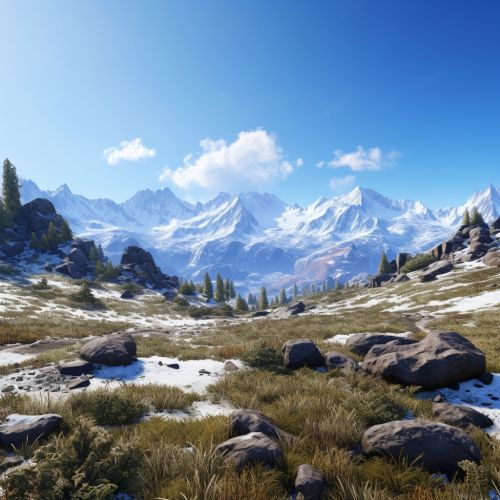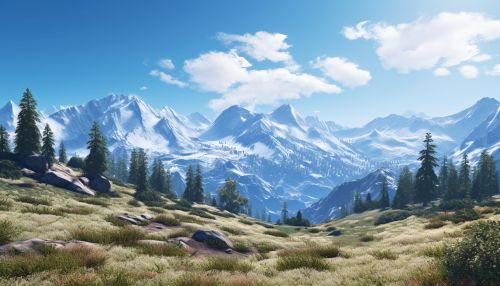Alpine climate
Introduction
The alpine climate is a type of climate that is typically found in high-altitude regions of the world. This type of climate is characterized by cold temperatures, heavy snowfall, and a lack of vegetation. The alpine climate is often compared to the polar climate, but there are some key differences between the two.


Characteristics
The alpine climate is characterized by a number of distinct features. These include:
- Cold Temperatures: The alpine climate is known for its cold temperatures. The average annual temperature in alpine regions is typically below freezing. This is due to the high altitude and the lack of heat retention in the thin air.
- Heavy Snowfall: Alpine regions typically receive a significant amount of snowfall. This is due to the cold temperatures and the high levels of precipitation that are common in these areas.
- Lack of Vegetation: Due to the harsh conditions, vegetation in alpine regions is typically sparse. The plants that do grow in these areas are often small and hardy, able to withstand the cold temperatures and heavy snowfall.
Geographical Distribution
Alpine climates are found in high-altitude regions around the world. This includes the Alpine region in Europe, the Rocky Mountain region in North America, and the Andean region in South America. Other areas with alpine climates include the Himalayan region in Asia and the Southern Alpine region in New Zealand.
Alpine Climate Zones
Alpine climates can be further divided into several different zones, each with its own unique characteristics. These zones include:
- Lower Alpine Zone: This is the lowest altitude at which the alpine climate is found. The lower alpine zone is characterized by a mix of trees and shrubs, as well as a variety of grasses and flowers.
- Middle Alpine Zone: The middle alpine zone is characterized by a lack of trees and an abundance of shrubs and grasses. This zone is also known for its high levels of snowfall.
- Upper Alpine Zone: The upper alpine zone is the highest altitude at which vegetation can grow. This zone is characterized by a lack of vegetation, with only a few hardy plants able to survive the harsh conditions.
Impact on Human Activity
The alpine climate has a significant impact on human activity. The cold temperatures and heavy snowfall make these regions ideal for winter sports such as skiing and snowboarding. However, the harsh conditions also make these areas difficult to inhabit, with few people living in alpine regions year-round.
